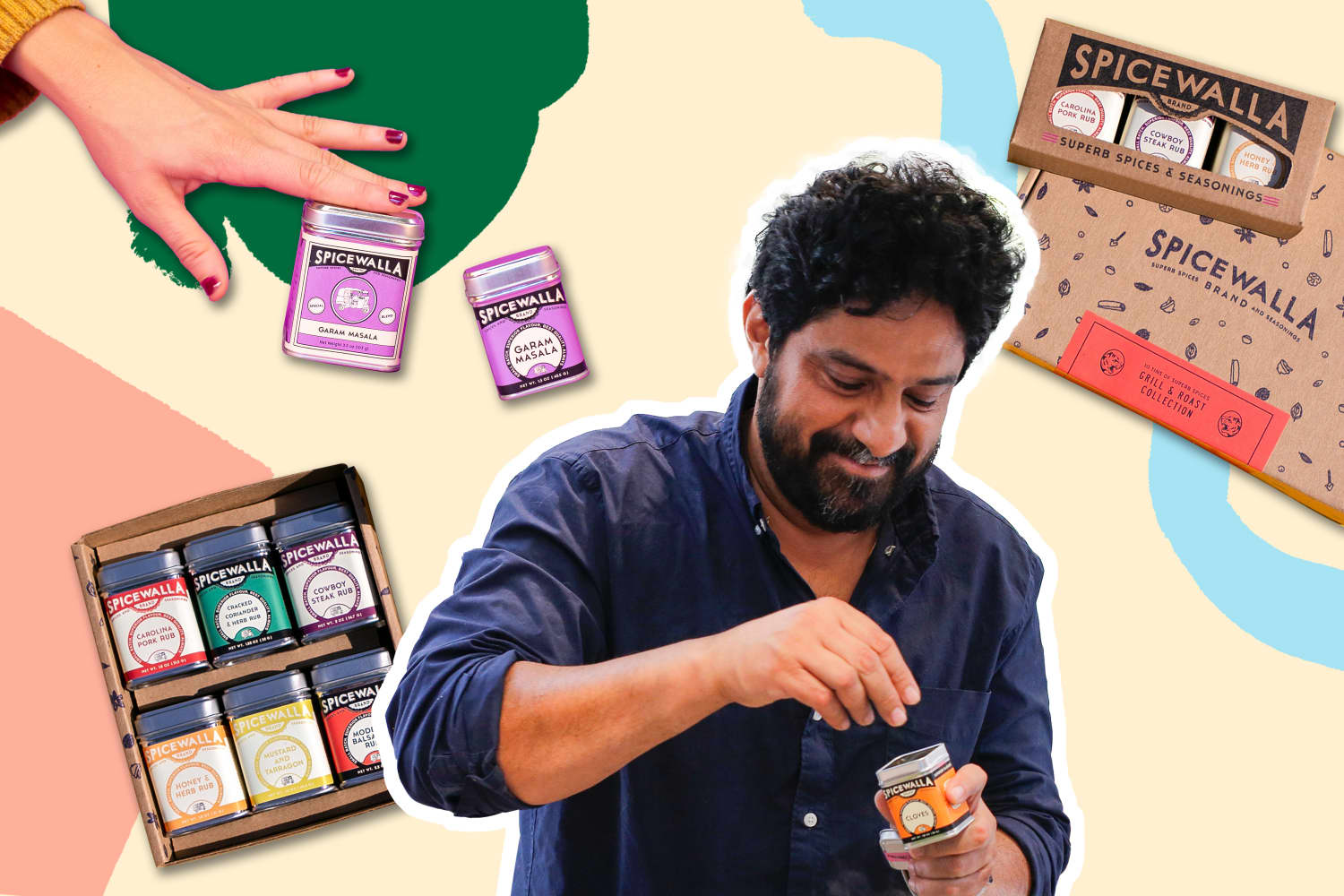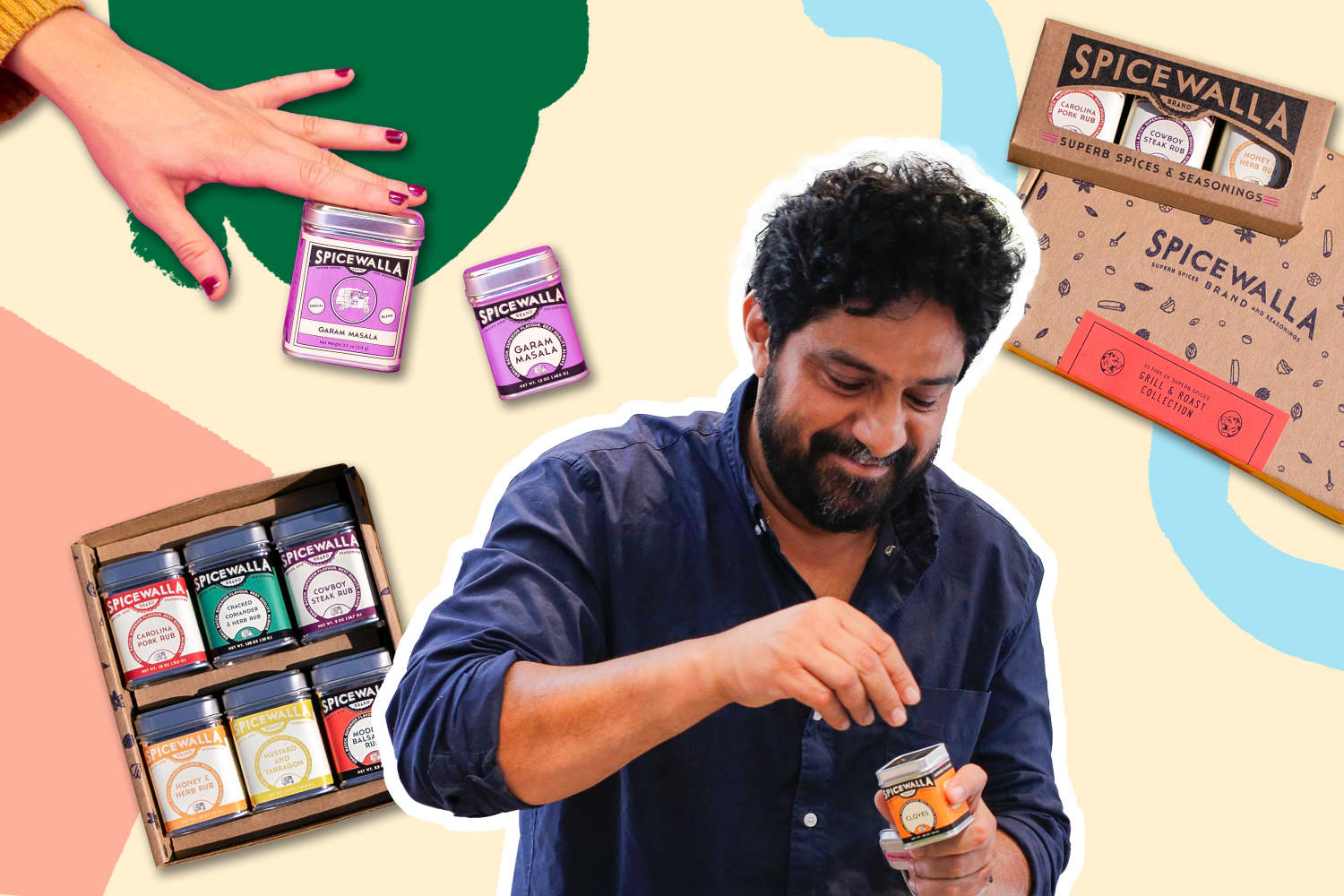Products You May Like

We independently select these products—if you buy from one of our links, we may earn a commission.
“I’d always bring my masala dabba with me whenever I was invited to do collaborative dinners with other chefs,” says Meherwan Irani, whose resume includes chef, restauranteur, five-time James Beard nominee, and the founder of Spicewalla. His stainless dabba bursting with bright, fragrant spices was always the center of attention, with folks gathering around it to see and smell his spices. “That’s when I realized that for most average American kitchens, what I was bringing out seemed very exotic.” Irani was approached by a North Carolina-based distribution company to help them figure out where to source spices. Three months in, the founder asked Irani to take on the project instead. “Given that I had a built-in customer — this company, and they had hundreds, if not thousands of restaurants — I said “Okay, let’s do it,” and we founded Spicewalla, a company by chefs, for chefs.”
Spicewalla officially launched in 2017, and from the very outset positioned itself as a brand with a mission to change the way Americans cook with spices. “I’m not just selling you cumin, dhana jeera, paprika, and herbs de Provence. I’m selling you this beautiful roast chicken and this amazing curry that you can create” notes Irani. Once a particular spice is added to his collection, Irani puts on his chef’s hat and works hard to educate his customers on how to use it to create an interesting twist on flavors they’re already familiar with. Since launching, Irani has built his line to include over 250 spices and unique blends. He also frequently collaborates with fellow chefs and industry experts to create curated collections.
As someone who uses a wide variety of spices from Indian grocery stores, I was curious to see what was different about Spicewalla’s collection. After all, isn’t turmeric just turmeric? Well, turns out it’s not, and the stark difference in quality shines through in every spoonful of the meals I have cooked using their spices. Curious to learn more about Irani’s journey from chef to spice merchant, I chatted with him about everything from demystifying spices to choosing an equitable supply chain over an ethical one, and why I (and maybe even you!) need to get rid of all those spice bottles we have been holding onto from eons ago.
How has the transition been from a chef to owning a spice brand?
What defines Spicewalla, me, and the brand is that I’m not selling spices. I want to make you a better cook, and spices are just a great way to be a better cook. And that’s my mission. I do these Instagram videos every Saturday and so much recipe development because in my mind it doesn’t make sense to just sell you some spices and then you go “Okay, now what do I do?” But if I can show you and educate you on how spices work, how to think about them, how to use them, how to start being familiar with them, take away the intimidation factor of working with spices, now I’m actually making a difference. Chai Paani’s mission was to change the way Americans thought about Indian food, and Spicewalla’s mission is to change the way Americans cook with spices. And not just Indian spices, spices from around the world. Think about how familiar working with spices is for someone from any Asian country or even South America. It’s not like I’ve done something new, I’m just trying to get this very Euro-centric part of the world to have the same comfort as many people all over the world do.
Being from India, I know the importance of spices, not just in food but also in religious and wellness rituals. They’re an imperative part of our social fabric. How have you tried to retain those values while still creating a brand with a global appeal?
Food is not just for nourishment, it’s to bring family together, to capture your cultural heritage and traditions. Because food has such a sacred place in our culture, we show the value that spices have to us by using them in religious ceremonies. This goes back to spices being treasured for millennia all over the world. I like to joke that Christopher Columbus set sail from Spain looking for a trade route to India for spices. Most of the colonization that came to India were all looking for spices. For instance, how do you make an okra Mexican, Indian, Spanish, or American? The only thing that tells you this belongs to a certain part of the world is how it’s spiced. So in my mind, as a company, we’re trying to say that you can travel the world from sitting at home and experience the religions of the world and understand their cultures and how they even came to be. It’s not just spices to me, it’s storytelling, it’s history. It’s the reason why food means so much to people. We all love collecting cookbooks. Why? Because we can travel the world. With spices, it’s the same thing, but now, it’s a more active engagement. If you broaden your pantry, you broaden your access to wonderful cuisines from around the world.
In the United States where most pantries stock maybe a handful of popular exotic spices, how hard has it been getting your customer base to experiment with the 250 (and counting!) spices and blends you stock at Spicewalla?
The easiest way has been creating content, recipes, and cooking videos, but it’s not just creating a recipe that can be intimidating for people. What if I say oh, here’s a way for you to jazz up a fried fish sandwich, or a burger, or spaghetti with meatballs, or a grilled cheese sandwich? It’s taking the intimidation factor away from the cuisine so that the spice can be more easily incorporated. Turmeric, for example, nobody knew what to do with it when cooking. But now you put it into a cocktail or a latte, in a form that’s accessible. Are we dumbing things down? Absolutely not. We’re making them approachable.
Personally, I find Spicewalla’s tin to be a modern spin on a traditional spice dabba. Was that the inspiration behind the look?
When it was time to design the packaging for Spicewalla, I said we’re not just selling spices, we’re selling flavor, the idea of cooking, and nostalgia. We’re telling a story that spices come from somewhere, they travel around the world, it’s this incredible unique thing. And right off the bat, we said no to plastic. Then we said no glass because, in my mind, spices are like coffee beans, we want to keep them dark and fresh. I wanted opening the spices to feel like opening a gift box. Then we looked at a variety of cool Indian packaging and came up with this look. And it’s worked, they’ve almost become collectibles. People will send us pictures of them proudly displayed and of custom cabinetry, they’ve made to show off the tins. And because they’re in tins, I wanted people to leave them out on the kitchen table, not to hide them away. Function, beauty, and design were integral to the process.
From where do you source most of your spices?
We have a patchwork of suppliers. People talk a lot about an ethical supply chain, but I’m more interested in an equitable supply chain. You’re looking to see are farmers being paid fairly, is it a high-quality product that’s not being adulterated, and is it an efficient supply chain that’s not using up too many resources to get to you. So we work with companies that have demonstrated to us that that’s exactly how they work. In terms of where our spices come from? All over the world. We have spices from India, Albania, Israel, Turkey, Zaire. If you look at the list of where our spices come from, it’s a United Nations agency list.
How do you decide on your exhaustive list of unique blends?
For me, blends are real cultural touchstones. You say garam masala or za’atar and they know what culture you’re talking about. Even with a blend like curry powder, which is more of a modern, English blend, there are so many variations on it. Explaining the variations between blends gives me so much joy. My garam masala is my mom’s recipe who’s from North India, but if you were to go to South India, the garam masala would be different there. The ideation process, in the beginning, was essentially taking all of the classics and seeing if we could make the best version of it. I look at blends in a few ways: First, when you open it up, does it look like what you’d expect it to? Then the notes are next. The third is the taste on the tongue before you cook with it. You have to be able to have some sense on the palate for what it’s going to do to the food. Then finally, how it tastes in the food when it’s cooked. That’s the process I follow for every blend to make sure that when you open that tin, it hits you visually, on the nose, in the mouth, and when you cook with it.
For anyone new to Spicewalla, what spices would you recommend they start with?
First recommendation: Open your spice drawer and throw everything away that’s been bought over six months ago. Then get an 18-pack Kitchen Essentials from Spicewalla, and it’ll give you the foundational spices you need for cooking the majority of the food that most Americans cook. Once you feel like you want to experiment, we also have collections. If you’re interested in Middle Eastern cuisine, we have a Middle Eastern spice collection. Same for Latin American cuisine. The last thing I’d recommend is even if you bought the 18-pack and you didn’t use, say, all of the paprika in it, get rid of it after eight months. Why? Every day we open our fridge and get rid of everything that looks old or is expired. But no one opens up their drawer and tosses the $4 tin of spices they bought 6 years ago. And then they go to cook with it, and it tastes nothing like they expected it to be. We sell refill packets, so you don’t need to get a new tin, and it has a cheaper price.
If you had to pick just one spice as your favorite, what would you choose, and why?
It’s hard to pick a favorite, but I love spices that bloom and add flavor. Mustard seed, for me, is a misunderstood spice in America. But when you pop mustard seeds in oil and get that flavor, it works so well in so many cuisines, not just with Indian food. I love it for its ability to add so much depth of flavor.
